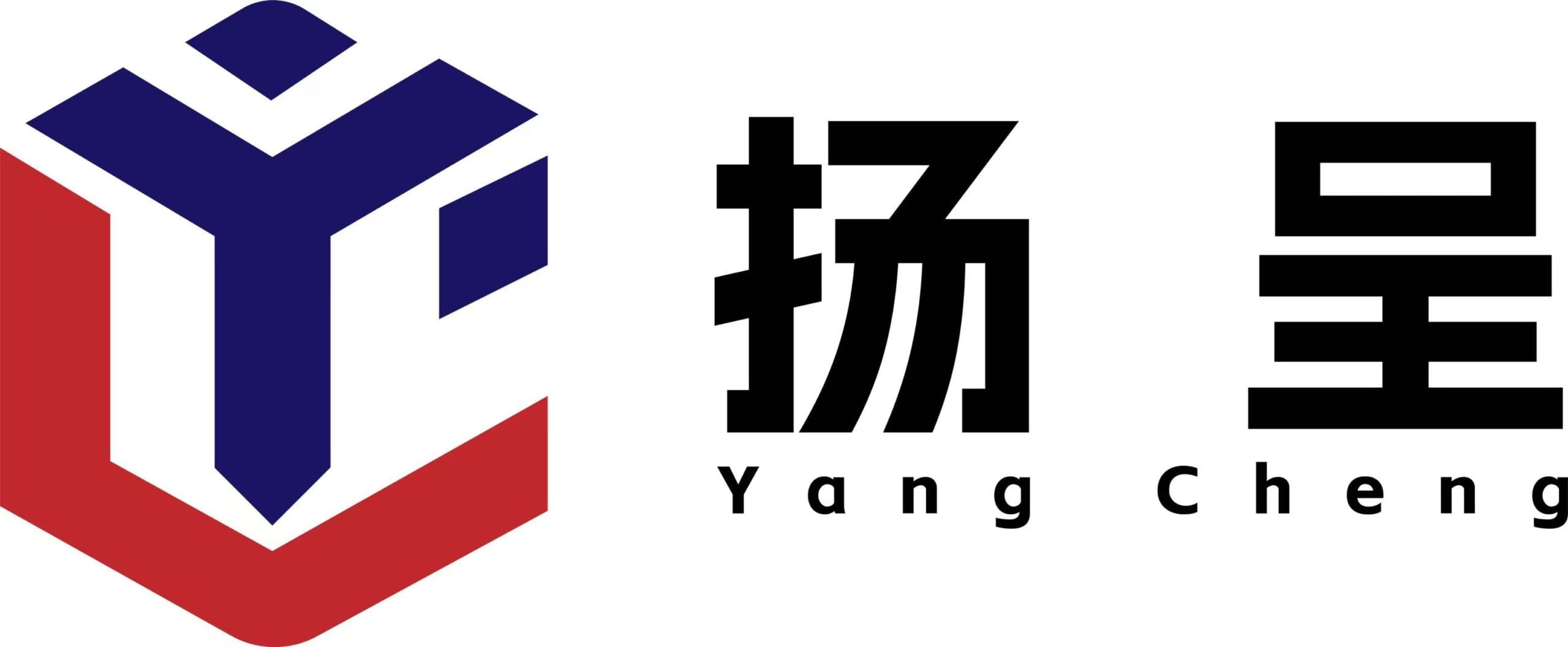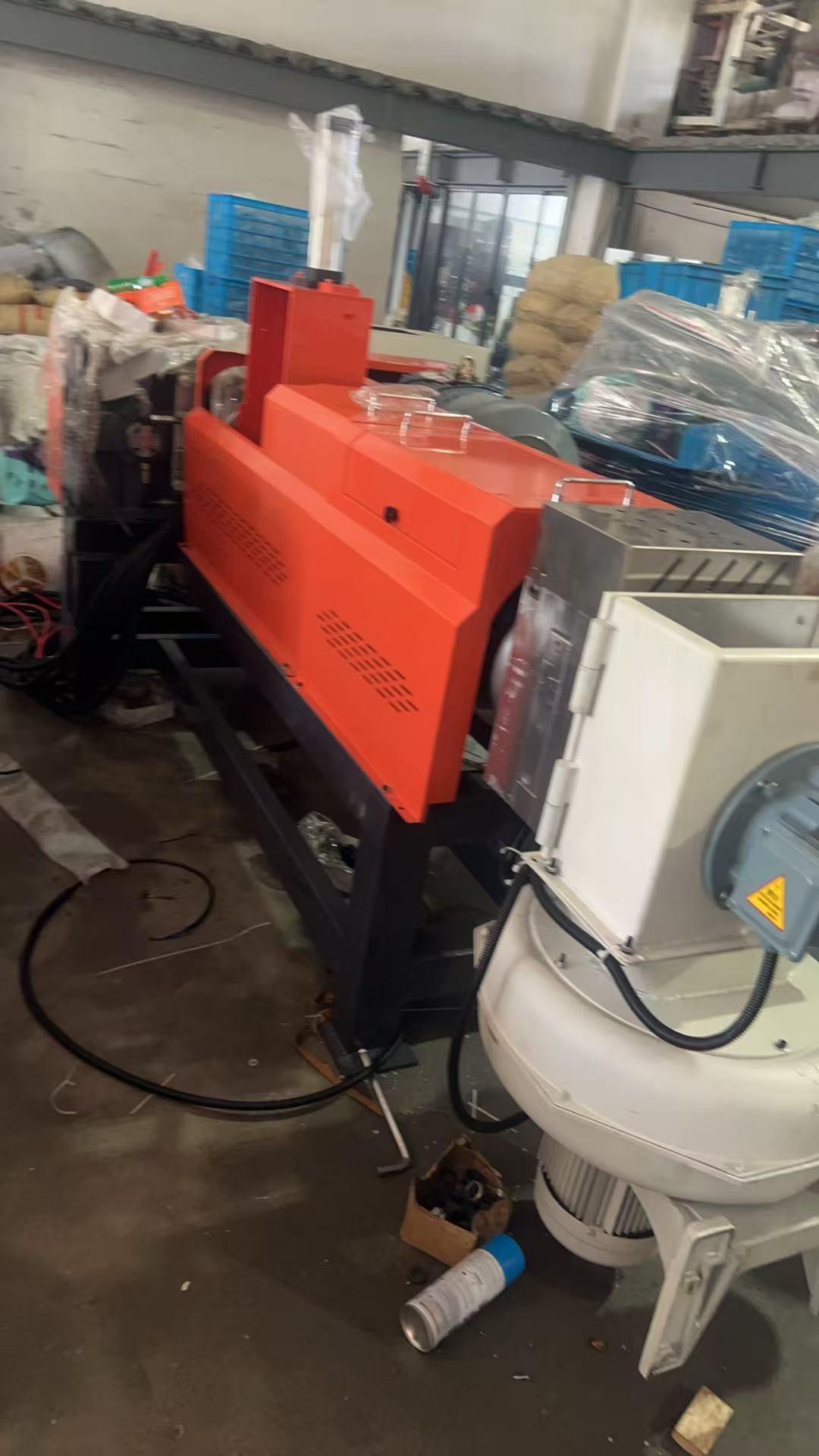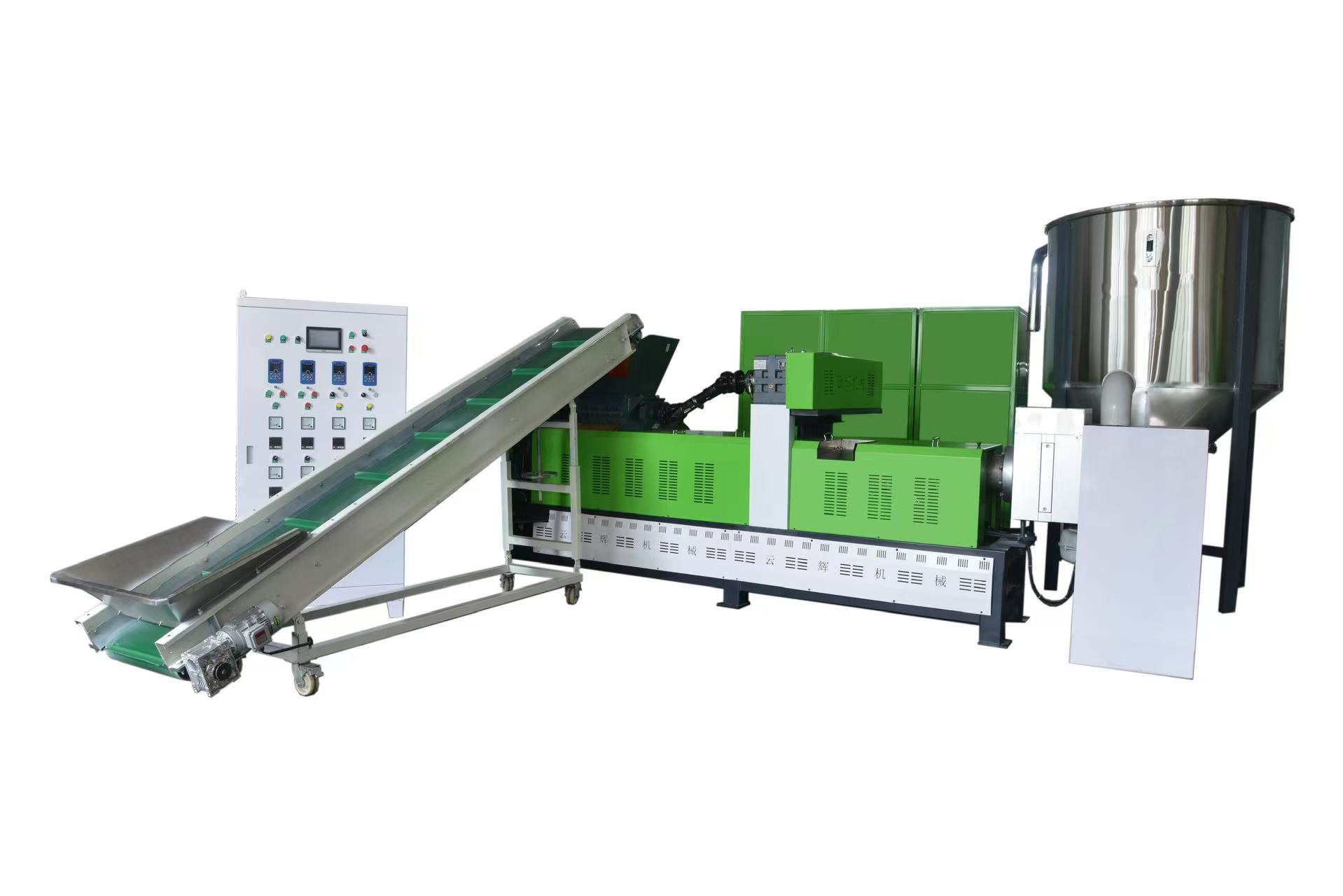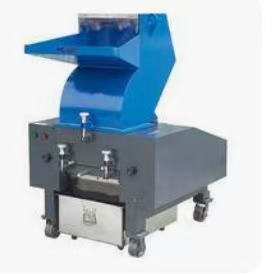Plastic Recycling Machines: A Comprehensive Analysis from Principles to Applications
Against the backdrop of worsening global plastic pollution and growing demand for sustainable resource utilization, plastic recycling machines— as core equipment for the recycling of waste plastics— are gradually becoming a key pillar in the environmental protection and industrial sectors. Through systematic technical processes, they convert waste plastics that would otherwise be landfilled or incinerated into reusable recycled materials, providing a practical solution for the green transformation of the plastic industry.

1. Definition and Classification: Accurately Matching Diverse Recycling Needs
A plastic recycling machine is not a single device, but a system of equipment capable of completing the entire “waste plastic collection-treatment-recycling” process. Its core function is to process waste plastics into uniform recycled plastic pellets through processes such as crushing, cleaning, melting, and extrusion. Its classification is mainly based on the materials to be processed and application scenarios, ensuring efficient recycling of different types of plastics:
• Classification by plastic material: Can be divided into specialized machines for polyolefins (PP, PE), polyethylene terephthalate (PET), polyvinyl chloride (PVC), etc. For example, PP/PE recycling machines are suitable for processing flexible waste such as plastic films and woven bags, while PET recycling machines are specifically designed for transparent rigid plastics like mineral water bottles and beverage bottles, enabling effective separation of different materials in bottle bodies, caps, and labels.
• Classification by processing scale: Covers small household machines (with a daily processing capacity of 100-500 kg, suitable for small workshops or laboratories), medium-sized production lines (daily processing capacity of 1-5 tons, meeting the needs of small and medium-sized recycling enterprises), and large-scale automated lines (daily processing capacity of over 10 tons, equipped with intelligent control systems for large-scale renewable resource factories).
2. Working Principle: Five Steps to “Rebirth” of Waste Plastics
The working process of plastic recycling machines follows the principle of “physical treatment as the main approach, supplemented by chemical stability”. Through five core steps, the purity and performance of recycled pellets are ensured:
1. Pretreatment: Sorting and Crushing: First, different types of plastics are separated by manual or intelligent sorting equipment (such as near-infrared spectroscopy sorters) to remove impurities like metals, stones, and paper. Then, crushers break large plastic items (e.g., plastic barrels, plates) into 5-10 mm fragments, increasing the contact area for subsequent processes and improving processing efficiency.
2. Cleaning: Descaling and Degreasing: The crushed plastic fragments are sent to cleaning tanks. Dirt, mud, printing ink, and oil stains (e.g., residual oil in oil barrels) on the surface are removed using high-pressure spray, stirring, or ultrasonic cleaning technology. For hard-to-clean waste (e.g., pesticide bottles), neutral detergents are added to ensure no chemical residues after cleaning, preventing negative impacts on the environmental friendliness of recycled plastics.
3. Drying: Dehydration and Temperature Control: The cleaned plastic fragments have high water content and need to be sent to hot air dryers or centrifugal dryers for drying at 60-80°C, controlling the moisture content below 0.5%. Insufficient moisture removal will cause bubbles during subsequent melting, leading to cracks in recycled pellets and affecting product quality.

4. Melting: Restoring Plasticity: The dried plastic fragments are fed into screw extruders. They are gradually heated and melted by external heating rings of the barrel (with 3-5 temperature control zones; temperatures are adjusted based on plastic materials— e.g., the melting point of PE is approximately 130-150°C, and that of PP is about 160-180°C). Meanwhile, the shearing action of the screw ensures uniform mixing of the plastic melt, restoring its fluidity.
5. Extrusion and Pelletizing: Shaping and Cutting: The molten plastic melt is extruded through the extruder die (usually circular holes) to form continuous plastic strips. After rapid cooling and shaping in a cold water tank, the strips are cut into 2-4 mm cylindrical pellets by a pelletizer. Finally, a vibrating screen is used to select pellets with uniform particle size, which are then packaged and ready for sale as recycled raw materials.
3. Core Advantages: Dual Value in Environmental Protection and Economy
The widespread application of plastic recycling machines essentially stems from their dual advantages in environmental and economic aspects, which align with the current global demand for sustainable development:
• Environmental Protection: Reducing Pollution and Resource Consumption: Recycling 1 ton of waste plastics can reduce the consumption of approximately 7.4 barrels of crude oil (plastics are mainly derived from petroleum refining) and avoid about 1.8 tons of carbon dioxide emissions. When used as a substitute for virgin plastics in production, it also reduces land resources occupied by waste plastic landfills and minimizes the release of toxic gases like dioxins from incineration.
• Economic Benefits: Lowering Production Costs and Expanding Markets: The price of recycled plastic pellets is usually 30%-50% lower than that of virgin pellets. For example, virgin PE pellets cost about 8,000 yuan per ton, while recycled PE pellets only cost 4,000-6,000 yuan per ton, significantly reducing raw material costs for downstream plastic product enterprises (e.g., packaging and pipe manufacturers). Additionally, recycled pellets can obtain environmental certifications such as EU CE and US FDA, entering high-end application fields like food packaging and children’s toys to increase product added value.
• Easy Operation: Automation Lowers the Threshold: Modern plastic recycling machines are generally equipped with PLC control systems, allowing one-click setting of parameters such as temperature, rotation speed, and cleaning time. Some models even support remote monitoring and fault early warning, reducing manual operation requirements and enabling small and medium-sized enterprises to quickly master usage methods.

4. Application Fields: Diverse “Outlets” for Recycled Pellets
Recycled plastic pellets processed by plastic recycling machines have penetrated multiple production fields due to their stable performance and cost advantages:
• Packaging Industry: Accounting for the largest proportion (about 60%), recycled pellets are used to produce plastic films (e.g., supermarket shopping bags, express packaging films), woven bags (fertilizer bags, feed bags), and hollow containers (non-food-grade plastic barrels, storage boxes). Among them, recycled PP pellets can also be used to make packing belts for packaging.
• Building Materials Industry: Recycled PE pellets can be processed into plastic pipes (for municipal drainage, farmland irrigation), floor coverings, and waterproof membranes; recycled PVC pellets are used to produce wire troughs and decorative gussets, whose hardness and corrosion resistance can meet the requirements of basic building materials.
• Automotive and Home Appliance Industries: In the automotive sector, recycled PP pellets are used to make bumpers, interior panels, and battery casings; in the home appliance sector, recycled ABS pellets (requiring modification treatment) can be used to produce washing machine inner drums and air conditioner casings, realizing a “recycled-to-recycled” circular model.
5. Market Status and Development Trends: Technology Upgrading Driven by Policies
Currently, the global plastic recycling machine market exhibits the characteristics of “rapid demand growth and accelerated technological iteration”:
• Market Status: According to industry data, the global plastic recycling machine market size was approximately 8.5 billion US dollars in 2023. Asia (especially China and India) is the main growth region. Driven by China’s “dual carbon” policy (carbon peaking and carbon neutrality) and the deepening of the “plastic restriction order”, the demand for recycling machines in China has grown at an average annual rate of over 15%, with medium-sized production lines becoming the market mainstream.
• Development Trends: In the future, plastic recycling machines will upgrade in three directions: first, intelligence— integrating AI sorting and big data energy consumption monitoring to achieve fully unmanned operation throughout the process; second, greenization— adopting electric heating instead of fuel heating to reduce energy consumption, while developing equipment capable of processing mixed plastics to lower sorting difficulty; third, refinement— improving the performance of recycled pellets through integrated equipment with modifiers (e.g., tougheners, antioxidants) to meet the needs of high-end fields.
6. Purchasing Recommendations: Selecting Based on Needs and Balancing Cost-Effectiveness
When purchasing plastic recycling machines, enterprises or individuals should focus on the following three points based on their own needs:
• Clarify Processing Requirements: Select a suitable machine model based on the type of plastic to be processed (e.g., flexible/rigid, single material/mixed materials) and daily processing capacity. For example, if mainly processing PET bottles, priority should be given to equipment with integrated “bottle flake cleaning-crystallization drying” functions; if the processing capacity is small (e.g., less than 500 kg per day), a small single-screw extrusion pelletizer can meet the needs, and there is no need to blindly pursue large-scale equipment.
• Inspect Equipment Quality: Focus on core components, such as the blade material of the crusher (preferably high manganese steel for strong wear resistance), the screw material of the extruder (38CrMoAlA alloy steel for corrosion resistance and high-temperature resistance), and the stability of the control system (preferably well-known brand PLCs such as Siemens and Mitsubishi). The quality can be judged by checking the manufacturer’s production qualifications (e.g., ISO9001 certification) and customer cases (whether there is cooperation experience with large enterprises).
• Value After-Sales Service: Plastic recycling machines are mechanical equipment, and problems such as blade wear and heating ring failure may occur after long-term use. It is necessary to select manufacturers that provide rapid after-sales response (e.g., 24-hour technical support), regular maintenance services, and supply of wearing parts to avoid production disruptions due to equipment shutdowns. Meanwhile, request manufacturers to provide operation training to ensure that employees can use the equipment standardizedly and extend its service life.






